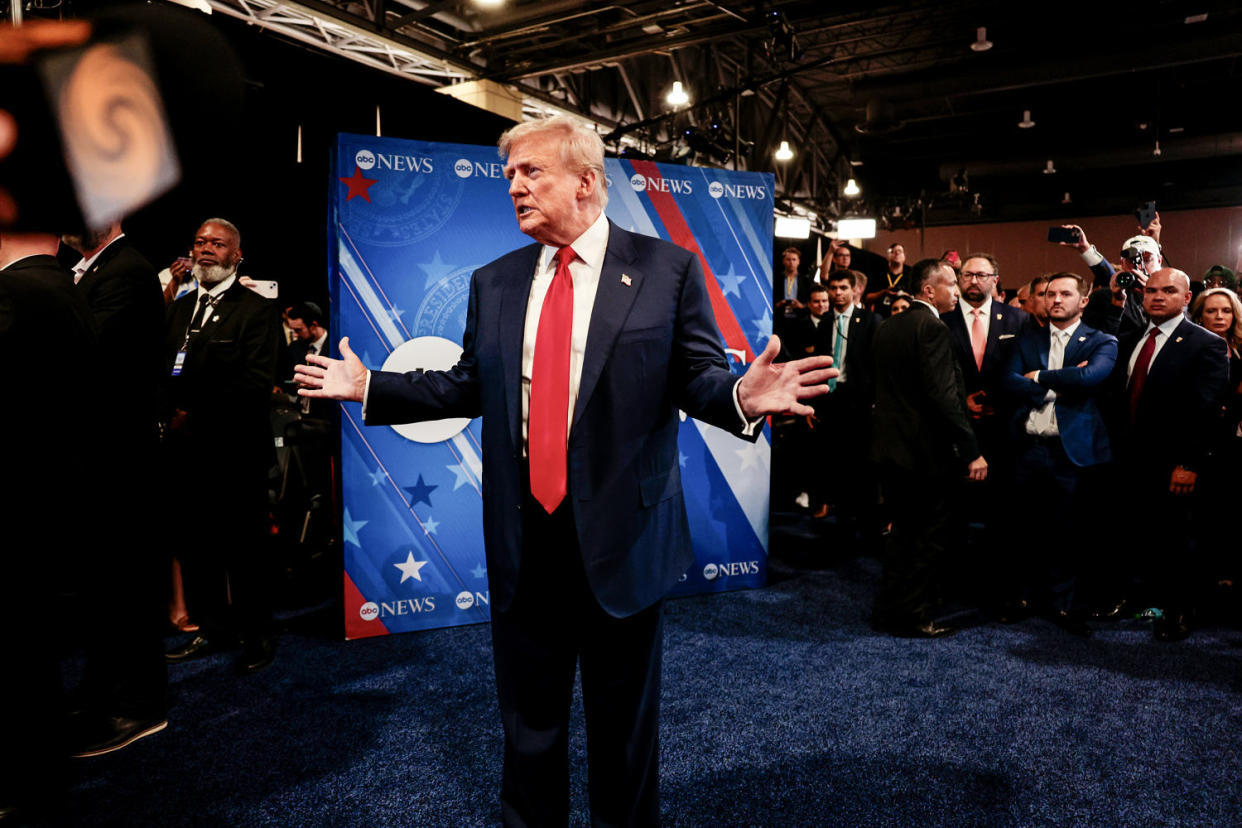After years of threats, Trump still doesn't have a plan to replace Obamacare

After eight years of threatening to repeal the Affordable Care Act, more commonly known as Obamacare, former President Donald Trump still doesn’t have a comprehensive plan to replace it.
Experts doubt it would happen under a second Trump administration either, given the difficulty of coming up with a policy that satisfies all parties and the former president’s lack of a specific plan.
“It’s kind of hard to find any meat on the bones,” said John A. Graves, a professor of health policy and medicine at Vanderbilt University School of Medicine. “It’s just kind of bluster and can kicking.”
During Tuesday night’s debate with Vice President Kamala Harris, Trump claimed he had “concepts of a plan” to replace the health care law, promising to do so at a lower cost.
“We are working on things. We’re going to do it. We’re going to replace it,” Trump said. “We’re looking at different plans. If we can come up with a plan that is going to cost our people, our population less money and be better than Obamacare, then I would absolutely do it.”
His latest pitch — a more affordable health law — may seem compelling, especially because health care spending in the United States is rising faster than the overall economy. People in the U.S. pay roughly twice as much for health care than any other nation on earth.
But is it feasible to create a new health care law that reduces the escalating costs?
“Right now, Obamacare is the status quo in health care,” said Larry Levitt, executive vice president of health policy at KFF, a nonprofit group that researches health policy issues. “Any ACA replacement plan would involve trade-offs and winners and losers, and you can bet that the losers would scream loudly.”
A substantial amount of money
The Affordable Care Act has provided health insurance coverage to about 50 million Americans — about 1 in 7 people — over the last 10 years, according to the Treasury Department. In 2024 a record 21 million people signed up for ACA, including more than 5 million who were new to the coverage.
And it holds broad support.
Under the health law, the federal government pays for expanded Medicaid coverage and for premium subsidies that make the monthly out-of-pocket cost more affordable. Under the Inflation Reduction Act, signed into law in 2022, those subsidies were extended to middle-income people — those with incomes over four times the poverty level, or $103,280 for families of three in 2024.
That all costs the government “a substantial amount of money,” Levitt said.
The health law is expected to cost the federal government around $631 billion over the next five years, according to the Congressional Budget Office.
“Republicans and Trump in the past have talked about reducing the amount the government spends on ACA, but the flip side of that would be that families would end up paying more and fewer people would have health insurance coverage,” Levitt said.
There are a handful of competing plans by Republicans in Congress to change or repeal the law, Graves said.
That includes a plan published in March by the Republican Study Committee, a congressional caucus of conservative members of House Republicans, that would roll back the ACA’s subsidies and regulations that were aimed at extending insurance coverage. It would also convert Medicaid from an entitlement program to a block grant system. Block grants give states more flexibility in how they run their programs, but they also typically provide limited funding and may restrict eligibility for enrollees.
The study committee estimates that its plan would save the federal government more than $4.5 trillion over 10 years.
Gerard Anderson, a professor of health policy and management at the Johns Hopkins University Bloomberg School of Public Health, said the idea of gutting the ACA and implementing a block grant system has been around for a long time. Under the Republican plan, “states would continue to have less and less money because health care is rising faster than inflation.”
Graves said it would have “huge implications for patients.”
The Center on Budget and Policy Priorities, a think tank, estimates that it could cause tens of millions of Medicaid recipients to lose coverage as well as 4 million people under the Affordable Care Act.
It’s unclear how else Trump would go about cutting costs in a new term, Graves said.
Looking at the past
Jill Horwitz, the David Sanders Professor of Law and Medicine at UCLA School of Law, said one might gauge how Trump could save money by looking at actions taken during his administration.
“We’ve seen the Trump movie before, so voters should just expect more of what we’ve seen,” Horwitz said.
Under the Trump administration, the number of uninsured people increased by over 2.3 million and grants to groups that help people get health insurance were slashed. Out-of-pocket costs rose and the number of short-term health plans, which often provide lower monthly premiums for less coverage, expanded, Horwitz said.
“It didn’t focus its attention in fixing problems with the Affordable Care Act, with increasing coverage, with making care more effective and efficient, like most administrations do,” Horwitz said. “Instead, it spent resources hollowing out protection for access to care from some of the most vulnerable people in the country.”
Graves said whoever wins will need to extend the enhanced subsidies under the Affordable Care Act, which are set to expire at the end of 2025, unless Congress extends them once more. Harris has committed to extending the subsidies; Trump has remained silent.
Levitt said it would be hard to come up with a replacement that “makes everyone happy and doesn’t result in many being worse off.”
“Trump has always wanted to spray magic pixie dust over Obamacare and make it better for everyone, but that’s just not possible,” Levitt said.
This article was originally published on NBCNews.com
